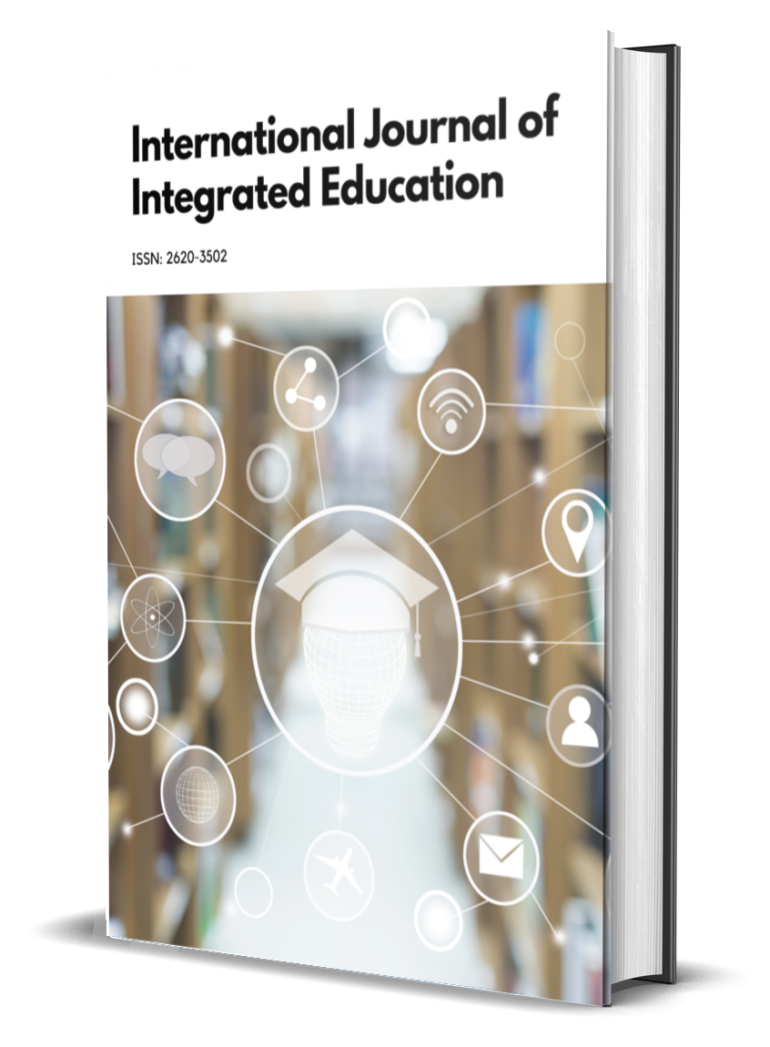The Attitude of Regular Students Towards The Education of Children With Disabilities in Secondary Schools in The Buea Sub-Division
Abstract
The purpose of this study is to find out "The Attitude of Regular Students towards the Education of Children with Disabilities in Secondary Schools in the Buea Sub-Division". Four main objectives were formulated to guide this study. To examine the effects of regular students seclusion on the education of children with disabilities. To determine the effects of regular student’s rejection on the education of children with disabilities. To find out the effect of regular students ridicule on the education of students with disabilities. To investigate the effect of regular students evaluation on the education of students with disabilities. A Series of recommendations were address to teachers (since they are the ones who spend most of the time with these children, they can do better in strengthening their attitude towards each other). Parents (they should make out time to teach their children certain morals in life and inform them on how, to treat others despite their physical appearances) and government officials (these officials should make sure that persons with disabilities are well taken care of) A survey research design was used for the study. The instrument used for data collection was the questionnaire. A total of 30 questionnaires were administered to students. Data was analyzed, using frequency and percentage. Statistics were presented using frequency tables. The result indicates that, most of the regular students have a positive attitude towards persons with disability while a minority of the students has negative attitudes
References
Antonak, R. F and Livneh, H(1988). The Measurement of Attitudes towards People with Disabilities: methods, psychometric and scales.
Alkinson, R. L.; Alkinson, R. C.; Smith, E. E.; Bern, DJ and Hilgard, E. R. (1990), Introduction to Psychology.
Barbotte, E.; Guillemin, F; Chau, N and the Lorhandicap group, (2001). Prevalence of impairments, disabilities, handicaps and quality of life in the general population: a review of recent literature Bulletin of the world health organization, vol, 79No11. 1047-1055.
Chan, F., Hedl, J., Jr., Parker, H. J., Lam, G. S, Chan, T., and Yu, B. (1988) Differential attitudes of Chinesse students towards people with disabilities: A cross cultural perspective. The international Journal of societal Psychiatry, 34(4), 267-273.
Cook, D. (1992), Psychological impact of Disability. InR. M. Parker and E. M
Szymenski(Eds), Rehabilitation counselling Basics and Beyond (249-272).
Corrigan, P. W., River, L., Lundin, R. K., Uphoff, K., Wasowski, U., Campion, J., et al. (2000). Stigmatizing Attributions about Mental illness. Journal of community psychology, 28, 29-102.
Donaldson, J., and Martinson, M. C., (1977). Modifying Attitudes towards physically Disabled persons. Exceptional children, 43. 337-341.
Fitaw, Y., and Boersma, M. F. 1. (2006). Prevalence and impact of Disability and
Rehabilitation 28, 949-953.
Graham, Sheila and Ronald English. "RequestingAcademic Accommodations" .
CHADD. Attention! October 2001 Gellman, W. (1959). Roots of prejudice against the handicapped journal of Rehabilitation, 25, 4- 6.
Grand, S. A., Bernier, J. E., and Strohmer, D. C. (1982). Attitudes towards Disabled person as functions of social content and specific Disability Rehabilitation psychology, 27, 165-174.
Gething, L. (1994). The interaction with persons scale: A new Australian instrument to Measure Attitude towards people with Disabilities. In D. S. Dunn (Ed), psychosocial perspective in Disability. [Special issue]. Journal of social behavior and personality 9, 23 -42.
Gill, C. J., (1996). Dating and Relationship issues. Sexuality and Disability 14 (3), 183-190.
Harper, D. C. (1999). Presidential Adress: social psychology of Difference: stigma, spread and stereotypes in childhood. Rehabilitation psychology, 44, 131- 144.
Hartlage, L. C., Roland, p., and Taraba, D. (1971). Perceptions of various types of Disabilities by the employer. Psychological aspects of Disability, 18(3), 122-124.
Howland, C. A., and Rintala, D. H. (2001). Dating behaviors of women with physical Disability. Sexuality and Disability, 19, 41-70.
Hunt, C. S., and Hunt, B. (2004). Changing Attitudes towards people with Disabilities: experimenting with an educational intervention. Journal of managerial issues, 16, 266-280.
In submitting the manuscript to the International Journal on Integrated Education (IJIE), the authors certify that:
- They are authorized by their co-authors to enter into these arrangements.
- The work described has not been formally published before, except in the form of an abstract or as part of a published lecture, review, thesis, or overlay journal.
- That it is not under consideration for publication elsewhere,
- The publication has been approved by the author(s) and by responsible authorities – tacitly or explicitly – of the institutes where the work has been carried out.
- They secure the right to reproduce any material that has already been published or copyrighted elsewhere.
- They agree to the following license and copyright agreement.
License and Copyright Agreement
Authors who publish with International Journal on Integrated Education (IJIE) agree to the following terms:
Authors retain copyright and grant the International Journal on Integrated Education (IJIE) right of first publication with the work simultaneously licensed under Creative Commons Attribution License (CC BY 4.0) that allows others to share the work with an acknowledgment of the work's authorship and initial publication in this journal.






1.png)
